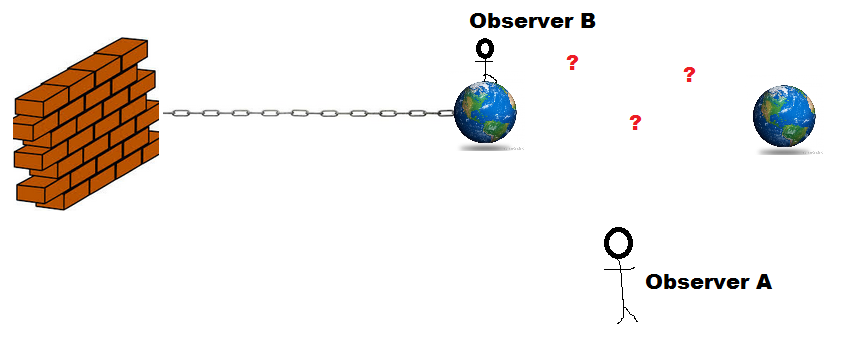When debating, I always try to reduce a disagreement to its essence. For Aqueous Id, I think this is it:
You clearly have a solid grasp of Newtonian mechanics, so I'm sure you understand the difference between frame-dependent and frame-independent quantities. That makes your argument all the more puzzling. Relative position and its derivatives [relative velocity, relative acceleration, etc.] are frame-independent. The time between two events [for instance, dropping a ball and that ball hitting the Earth] is frame-independent. So when I show a fall-time difference in the center-of-mass frame, I necessarily show a difference in all frames. Galileo's mistake/entirely-reasonable-approximation was to work in an inertial, Earth-centric frame. This gives a different result because the Earth is not quite inertial in this problem, so such a frame is technically unphysical.Only once you've chosen a coordinate system. I gathered from Fednis48 that you are setting the origin of your system at the c.g. That will invalidate any results you get, unless you take your results and convert them to Galileo's coordinates. Until then, there is no basis for comparing results, since relative quantities can not be taken from one frame of reference to another without a coordinate transformation.

